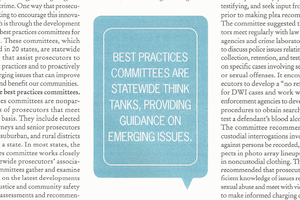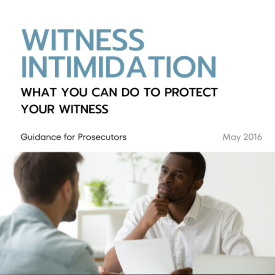Statewide Best Practices Committees for Prosecutors: A Nationwide Movement

Author(s): Kristine Hamann, Rebecca Rader Brown
A prosecutor’s core mission is and has always been to promote justice and to protect the community by ensuring public safety. Over the past 30 years, the way prosecutors approach this mission has evolved. In place of the old, reactive criminal justice model, prosecutors and police are using new methods and evidence to take a proactive, broader approach to preventing, investigating, and prosecuting crime.
Read More

